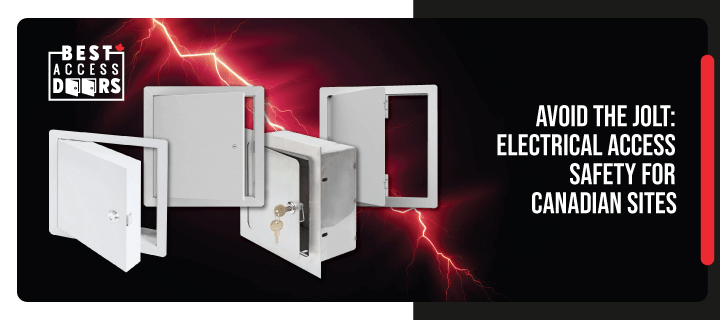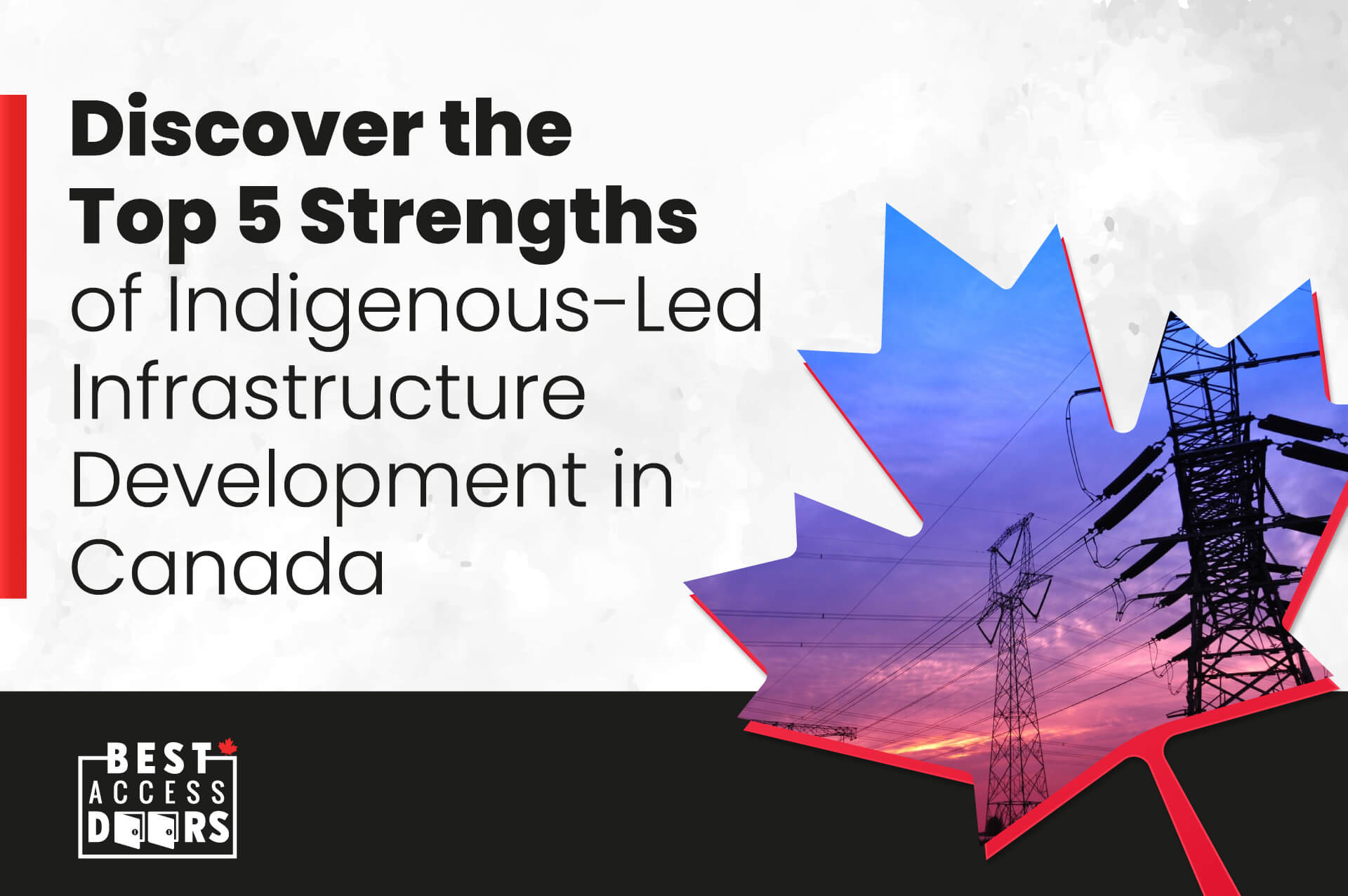Discover the Top 5 Strengths of Indigenous-Led Infrastructure Development in Canada Posted by Best Access Doors - Canada on 5th Jul 2023
Every community requires well-planned, steadfast, and various infrastructures to help progress the economy and create opportunities for everyone. Despite the apparent infrastructure gap and challenges presented against the First Nation indigenous people, the Canadian government and businesses have made several advances to break this unnecessary gap.
In this article, let's explore and understand the various challenges that First Nation communities face when gaining access to finances and resources to build the necessary groundwork.
What challenges do the First Nation communities encounter when it comes to infrastructure?
In these modern times, many of us take basic necessities for granted, such as safe access to water, clean energy, sewage lines and treatment, internet connection, and communication which are still lacking in many indigenous communities. This is surprising based on the fact that there are 600 First Nation groups across Canada which have managed to be resourceful and maximize their available resources because of the limitations that they experience in various sectors of infrastructure, such as:
- Low or limited financing options
- Federal policy fund limitations
- Complex government funding process
- Insufficient capacity to handle and maintain large infrastructure projects due to a lack of sponsors
- Confusing jurisdiction over the First Nation community leads to a lack of support from banks or private businesses
The infrastructure gap between Canadians and the Natives has extensively grown through the years; the Canadian Council for Public-Private Partnerships states that the estimated amount to break the gap can reach up to $30 billion in investment.
What benefits can indigenous-led infrastructure provide?
Infrastructure encompasses the necessary buildings or facilities that society needs to function correctly, including roads, bridges, clean water supply, sewage lines, schools, transportation or transit systems, and telecommunication, to name a few.
In line with this, there are significant advantages that indigenous-led infrastructure possesses unique strengths that benefit the native community and Canadians as well. Here are five examples of Indigenous-led infrastructures and their value to the residents.
- Wastewater Treatment Plant by Tsawwassen First Nation in British Columbia
- Solar Energy Generation and Storage Micro Grid by KiashkeZaagingAnishinaabek (KZA)/Gull Bay First Nation in Ontario
- Water Systems Infrastructure by Akisq'nuk First Nation in British Columbia
- Wataynikaneyap Power L.P. by First Nations in Ontario
- Alberta PowerLine in Alberta by Athabasca Chipewyan First Nation, Bigstone Cree Nation, Gunn Métis Local 55, Mikisew Cree First Nation, Paul First Nation, Sawridge First Nation, and Sucker Creek First Nation.
Strength #1: Providing Benefits Throughout Canada
The erection of indigenous-owned infrastructures indeed benefits the people residing in Canada, indigenous or not. The benefits extend to various aspects that offer services for the people. Here are two of those aspects:
- Benefit #1 Economic Development: The land is an essential fundamental asset when it comes to the economic development of a country, and the indigenous people of Canada own a small portion of land, but when combined comes to a large amount of land owned by the indigenous groups. The creation of an indigenous-led infrastructure in their land will pave the way for economic development as various leaders across the many aspects of the Canadian government and services acknowledge the erection of indigenous-led infrastructures as these infrastructures can provide the use of their land, allowing economic opportunities for everyone.
- Benefit #2: Employment Opportunities: Creating indigenous-owned infrastructures provides job opportunities to the indigenous community. These job opportunities tend to offer employers a reliable and steady income, especially for the indigenous groups.
Strength #2: Sharing Their Beautiful Culture
Culture is an essential part of life in any country. It determines the identity of all fellow citizens and connects them with history. Indigenous groups consist of a rich diversity such as knowledge, practices, expressions, representations, and skills that, if incorporated with an indigenous-owned infrastructure, shall have the chance to show the world a glimpse of the beautiful culture of the indigenous people of Canada.
Strength #3: The First Step of Indigenous People on Infrastructures
Everything has to start somewhere, and the erection of these indigenous-led infrastructures will make way for other indigenous groups all over the world to take part in helping the economy of their country through infrastructure. With their diversity and strength, there is no stopping the upgrade of the Indigenous people.
Strength #4: Promoting Cultural Preservation and Representation
Indigenous-led infrastructures offer a unique opportunity to promote cultural preservation and representation. The indigenous communities in Canada have a rich and diverse cultural heritage that deserves recognition and appreciation. By incorporating their cultural practices, knowledge, and expressions into the design and operation of indigenous-owned infrastructures, these projects become a platform for showcasing and sharing the beautiful culture of the indigenous people of Canada.
Strength #5: Fostering Sustainable Development and Environmental Stewardship
Indigenous-led infrastructure development often emphasizes sustainable practices and environmental stewardship. Many indigenous communities have a deep connection to the land and prioritize sustainable development that respects and preserves the natural environment. Indigenous-owned infrastructures frequently incorporate renewable energy sources, green building techniques, and ecological considerations to minimize environmental impact and promote a sustainable future. By adopting these principles, indigenous-led projects serve as role models for sustainable infrastructure development in Canada and beyond.
What do you need to do to own indigenous infrastructure and business?
Owning an indigenous business can be very complex and requires a lot of requirements, including:
#1: Proof of Indigency
One of the essential requirements in creating a business-type infrastructure is proof of indigency. These documents will prove that the owner of such a business is part of Canada's indigenous group, which, in turn, provides the owner with the benefits only the indigenous people can receive. There are two
Here's a list of I.D.s and documents that can show that a person in Canada is an indigenous person:
- First Nation Citizenship, Membership Code, or verification of heritage in writing by elected the First Nation Leadership for Non-Status Indians
- Northwest Territory Métis Nation Citizenship
- Northwest Territories Land Claim Settlement Beneficiary
- Confirmed Alberta Métis Settlement Member
- Approved Métis Nation citizenship
- Inuit Beneficiary Card
- Indian Status Card
#2: Construction of The Establishment
Having your infrastructure means having your establishments. If you plan on erecting one, ensure you only get from the best stores to get the best commercial buildings. Remember to install the necessary peripherals that are vital to the survival of the commercial building.
Every commercial building consists of essential components such as HVAC, plumbing, and electrical to keep the building up and running. Since these components are crucial, their maintenance and repairs are also vital, so you must make a way to make them accessible by authorized personnel and protected simultaneously. Find and install a general-purpose access door, like the BAC-AHD Flush Access Door, which is surprisingly easy to install and cost-friendly.
Thinking Of Building an Infrastructure?
Here at Best Access Doors, Canada, provides all types of access doors and panels that you can customize to protect your future commercial building! When you order from us, you gain unlimited access to high-quality products and assistance from our experienced product specialists. Contact us today at 888-982-8704 and let us help you address your access needs!






